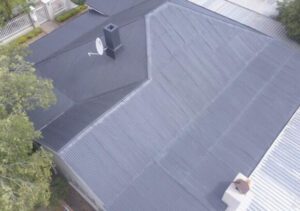When choosing Rubber Roof Companies consider the type of roofing they offer. EPDM, TPO, and mechanically fastened are some of the options you have. The type of installation you choose will depend on the structure of your roof, but there are some common differences between the types. These differences can be important when choosing a rubber roof for your home or business. Here are some advantages of EPDM roofing. Aside from being lightweight, EPDM roofing is easy to install and maintain. In addition, structural failures are rare. Unlike other types of roofing materials, rubber is very easy to repair – requiring little more than seam tape or overlays.

An EPDM rubber roof has a long-term service life of 25 to 30 years and is very flexible and lightweight. Its durability and wind resistance make it the ideal roofing material for steep and low-sloped roofs. An EPDM rubber roof can also be easily repaired or replaced should it ever need repairs.
EPDM roofing is a great choice for low-cost properties. It can be installed easily and quickly and has low maintenance requirements. Since the material is made from synthetic rubber, it is practically indestructible. It has even been known to slow the spread of building fires. Furthermore, repairs are relatively simple and require only basic tools, such as seam tape and overlays.
A well-installed EPDM roof will last for decades and is environmentally friendly. It is also 100% recyclable. A good-quality EPDM roof will outlast most other roofing materials. EPDM rubber roofing is a great choice for commercial and residential buildings. Although it requires professional installation, it is easy to do yourself, and requires fewer steps and risks than other roofing materials. So, whether you have a new construction or a historic home, you can rest assured that your EPDM roof will last for decades to come.
A professional should inspect your EPDM roof twice a year for damage and leaks. This way, you can detect problems before they become significant. You should also have your roof checked if there are storms or moderate-sized branches hitting it. The expert will look for any signs of shrinkage or punctures in the roofing membrane. Also, he will inspect for any improper installation of flashing. Without a trained eye, these problems are difficult to detect.
If you plan to install a new EPDM roof yourself, be sure to consider the cost. A new EPDM roof can cost $500 per square foot, so hiring a professional is highly recommended. The installation cost will vary by area, but an average residential EPDM roof can cost between $700 and $800.
TPO roofing is a relatively new roofing technology. It has been around for only about ten years, and manufacturers are still working to find the right chemical formula for it. TPO roofing is often less expensive than EPDM or PVC, and its reflective surface helps keep the inside of a building cool in the summer. As an added bonus, it is also good for the environment.
EPDM is a synthetic rubber that is cheaper initially, but is not as energy efficient. The other common alternative to TPO is PVC (Polyvinyl Chloride), which is more durable and can withstand extreme temperatures. It is also easier to install than TPO, and novice roofers can do it themselves. Regardless of the material, however, it’s important to hire a company that has specialized knowledge and experience in installing TPO roofs.
TPO is a lightweight, puncture-resistant material. It is easy to install and comes in different thicknesses. It can also be adhered to other surfaces using glue or mechanical attachment. TPO roofing is also waterproof and resistant to impacts and uplift. It is a good choice for homes that are in an area that gets rain and snow.
TPO is an excellent choice for homes that are looking for a durable, energy-efficient roofing solution. TPO roofing is also relatively inexpensive, and is an excellent choice for homes with low pitches and flat roofs. However, it is important to note that TPO roofing does have some drawbacks.
A TPO roof is made from a mixture of polypropylene, ethylene-propylene, and rubber. Each layer is reinforced with a filler. TPO roofs are a relatively new technology, and current research is being conducted to find the best formulations.